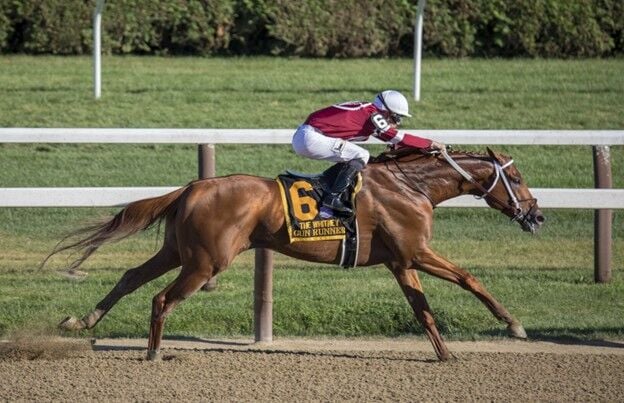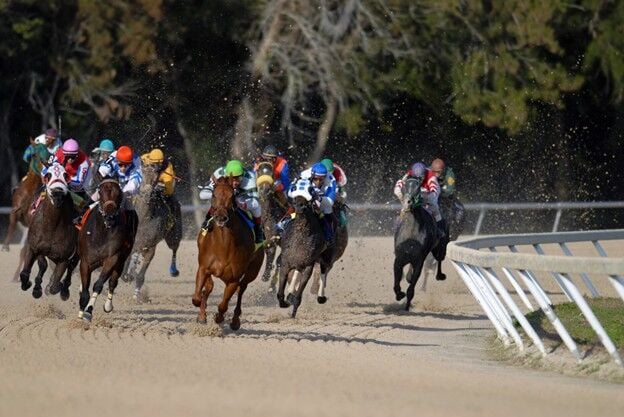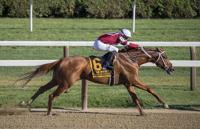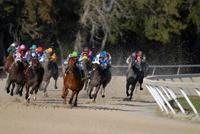Underdogs to Watch: Sleeper Picks for the 2025 Belmont Stakes

Picture Credit

The 2025 Belmont Stakes brings a shift in tradition and a reshuffling of expectations. Moved to Saratoga Race Course due to ongoing renovations at Belmont Park, this year’s race will unfold over a shortened 1¼-mile distance. Though that change levels the playing field somewhat, it doesn’t strip the race of its trademark demand for stamina and strategic timing.
In a Triple Crown season with no sweeping narrative of dominance, the spotlight turns toward overlooked contenders—those whose odds might not reflect their actual chances on race day. These underdogs are more than longshots; they are calculated risks with potential for a Belmont breakout.
Baeza: Undervalued Consistency Meets Recovery Strategy
Baeza’s name rarely surfaces first in Belmont betting conversations, but keen observers have taken note of his historical performance. This colt quietly turned in one of the most efficient runs in the Kentucky Derby, placing third despite a series of race-day obstacles. He encountered a wet track for the first time, got jostled early, yet still delivered a triple-digit Equibase speed figure (101). The resilience he showed in that race, combined with his consistency, positions him as a deceptively strong contender.
Trainer John Shirreffs made a strategic call to skip the Preakness. This move—far from being passive—aims to channel all of Baeza’s energy into one well-timed push at Saratoga.
The five-week window between the Derby and Belmont offers a rare training advantage, particularly for a horse whose trajectory suggests a blend of reliability and endurance. His adaptability, shown under pressure in Louisville, may prove even more valuable on an unfamiliar track like Saratoga.
What makes Baeza particularly compelling as a sleeper is his blend of physical durability and psychological poise. Horses that can thrive in chaos—yet still produce elite speed figures are dangerous in any field. At 13-1 in the Derby, he outran expectations. A similar performance at Saratoga, albeit in slightly more manageable conditions, could yield even better results.
Sandman: Pedigree Power with a Point to Prove
At first glance, Sandman’s seventh-place Derby finish does little to inspire confidence. But a deeper dive into his profile reveals qualities that could surface at the Belmont. Chief among them is his bloodline. Sired by Tapit, a stallion synonymous with Belmont dominance, Sandman carries the DNA of endurance.
Tapit has already sired four Belmont winners—Tonalist, Creator, Tapwrit, and Essential Quality—each celebrated for their staying power and ability to handle the final Triple Crown leg’s demands. It’s no surprise, then, that Sandman is drawing attention in the Belmont Stakes betting odds.
Sandman’s Derby outing saw him finish 12½ lengths behind Sovereignty. While far from ideal, the result masks his underlying potential. He was the second betting choice heading into that race—a reflection of strong pre-Derby workouts and sharp prep race efforts. The decision by trainer Mark Casse to bypass the Preakness wasn’t made lightly. It reflects a calculated bet that this colt, with his dirt experience and stamina-rich pedigree, is better suited to thrive with rest and a race tailored for endurance.
Saratoga’s surface won’t exactly mirror Belmont’s, but it will demand a similar ability to maintain drive through a long, sustained finish. Sandman has already proven he can win on dirt, and that could be a critical factor in a race with limited surface familiarity for three-year-olds. If he capitalizes on a slower early pace or benefits from a pace meltdown, his breeding might carry him farther than the odds suggest.

Picture Credit

Final Gambit: Versatile Closer with Quiet Momentum
Final Gambit’s name hasn’t dominated headlines, yet his credentials make him a compelling Belmont dark horse. After a fourth-place finish in the Derby and a win at the Jeff Ruby Steaks, this colt skipped the Preakness and enters Belmont season fresh and focused. Unlike more one-dimensional runners, Final Gambit shows versatility—he can close, but isn’t entirely dependent on pace collapse. That balance could serve him well over 10 furlongs at Saratoga.
The shortened Belmont distance slightly favors horses with tactical speed and a strong turn of foot, rather than just pure grinders. Final Gambit’s ability to sustain speed over synthetic and dirt surfaces makes him intriguing, especially on a track where adaptability may separate contenders from pretenders. He doesn’t have the same deep-bred stamina as Sandman or the steady speed metrics of Baeza, but his recent form and conditioning make him a candidate for significant value if overlooked at the windows.
Rodriguez: Rebounding Colt with Upside
Rodriguez, sidelined during both the Derby and the Preakness due to a foot issue, enters the Belmont picture under the radar. However, his performance in the Grade 2 Wood Memorial—where he wired the field—reminded observers of the explosiveness he can bring when healthy. Trained by Bob Baffert, Rodriguez remains a wild card. If entered, his presence would inject early pace into the race and potentially challenge other front-runners to keep up.
The risk with Rodriguez lies in unknowns: his layoff, his missed opportunities, and how he handles a field stacked with battle-tested runners. Still, there’s precedent for horses skipping early Triple Crown races and showing up big at the Belmont. Last year’s winner, Dornoch, followed that blueprint to perfection.
If Baffert chooses to run Rodriguez, expect aggressive tactics early. Whether he can sustain that speed to the finish is a gamble. But if the race shape favors frontrunners or the field gives him breathing room, he could make things interesting.
Journalism: Fatigue or Fire?
Though technically not a sleeper, Journalism’s Belmont status remains uncertain, creating an air of unpredictability. His thrilling Preakness win came just three weeks after a grueling Derby run, where he placed second to Sovereignty. If connections opt to run him, the key question will be whether he can recover in time for another top-tier performance.
Journalism’s late burst in Baltimore required navigating traffic and expending energy at critical moments—a physical demand that could affect him come June 7. His upside is undeniable, but his recovery window is tight. Should he enter the field, horse race betting enthusiasts will face a high-stakes decision: trust in his class or fade him in favor of fresher legs.
Saratoga’s Role in the Unexpected
While the Belmont Stakes always rewards endurance, Saratoga’s unique configuration compresses the narrative. The shorter distance means the test will involve more pace strategy and positioning than the traditional 1½-mile battle. This opens the door for horses with racing resumes highlighting shorter distances, untapped potential, or strong finishing speed—particularly those who’ve been rested and conditioned with this exact race in mind.
Saratoga’s dirt surface, while historic, hasn’t hosted many major three-year-old races at 1¼ miles, making direct comparisons difficult. But what’s clear is that fresh horses with proven dirt form and pedigrees that point toward late development may benefit most.
Quiet Threats in a Wide-Open Field
With a field still in flux, sleepers like Baeza, Sandman, and Final Gambit offer more than just intrigue—they bring real upside. They aren’t just filler beneath headline names like Sovereignty and Journalism. They’ve been shaped by calculated decisions, long-term conditioning, and race-day resilience. All three skipped the Preakness. All three enter the Belmont fresher, with questions answered and upside unexplored.
This year, the Belmont Stakes may not have a Triple Crown on the line, but it holds something arguably more enticing: a sense that anything can happen. For bettors and fans willing to look past the favorites, the undercard isn’t where the value lies—it’s right in the main event.






